Gina Antchandie from Croydon Council talks about the creative process of developing the Young Asylum Guide in collaboration with Lisa from Right to Remain and young unaccompanied minors. This article was originally published on the blog of the Children Caring on the Move (CCoM) project. CCoM investigates separated child migrants’ experiences of care, and caring for others, as they navigate the complexities of the immigration-welfare nexus in England.

I met Lisa from Right to Remain in 2019. At the time, I was looking at setting up a “UASC” (Unaccompanied Asylum Seeking Child) Knowledge Hub for professionals and was researching existing resources. That’s when I came across Right to Remain toolkit and Navigation Board for adults seeking asylum in the UK. I was immediately taken by the mountain of knowledge, meticulous work and the creativity gone into making such extraordinary resources. I very seldom use the word “empower” but Right to Remain had truly succeeded to translate a very complex, opaque and frankly disenfranchising asylum process into empowering tools, tools to fight back and regain some sort of control over one’s life. And I remembered from my time at Coram Voice how important it was for young people to feel both in charge but also supported to access one’s rights. I knew this was the balance and ethos we needed to strive for in the making of the Young Asylum Guide. To me, this was what these resources exemplified- the “problem” and “action” cards from the Navigation Board represented as many open doors for people used to having those slammed in their faces.
However, as it sometimes happens, this work had to take a back seat and it wasn’t until a year ago, round about the start of the pandemic, that Lisa contacted me again- she had received an enquiry about the asylum process for young people and wanted to find out if I had made any progress on an asylum Navigation Board for young people. That was the start of the Young Asylum Guide and of a great partnership. Amid laughter, book recommendations, anecdotes about our families, kettle and recycling burned matches, we worked through streamlining tons of information into clear stages- and I must admit Lisa, with her discerning brain, had to rein me in many times throughout this process… We also had the challenge of making something so inundated with technical terms into very simple language. In that, I feel it helped that I am a non-native speaker of English- I kept reminding myself what it was like when I first started learning English. We debated colours, commas, full stops or ellipsis. Thank God for Red Ink, our patient and committed designer! We were also very fortunate to receive some helpful feedback from Coram’s Young Citizens not only on the language but also on colour scheme and ease-of-use during a trial session. GMIAU also did an incredible job of going through the whole text ensuring we were in line with both community care and immigration law.
But, for me, working with young people from the Summermix on the illustrations was one of the most exciting part of doing the Young Asylum Guide. Tim, our artist facilitator, arrived early that afternoon- I thought “oh no… why so early?” I was worried he would get discouraged by all the hustle and bustle of trying to usher the students into their respective classroom in a “Covid-safe” manner. He turned out to be perfect- he managed to put everyone at ease, was engaging and supportive of any creative expression reassuring the class (even someone like me who can hardly draw a circle) that drawing was within everyone’s reach. He started the session with some good doodling (we used these in the People who can help section of the guide) and proceeded to throw in key words about the process guiding and inviting the young people to talk about and draw the feelings evoked by each stage, the key people throughout these stages, and the Home Office (we got quite a few austere-looking buildings and comments on that one…). It was without a doubt an afternoon of insight and fun.
Although there was much to do, making the guide never quite felt like work because of all those lovely moments shared with Lisa where we took the time to laugh and to relate and I hope this will come through. I hope, when you get to use the Young Asylum Guide with your young people, you will see yourself in them (or vice-versa) and work with them in the same spirit of care and respect we felt for each other and for the young people while putting this guide together.


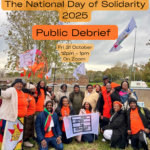
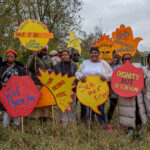
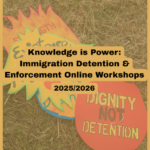






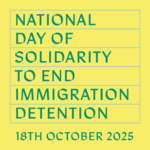
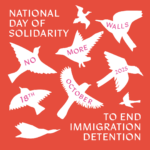
Discussion: